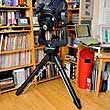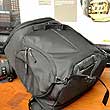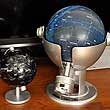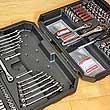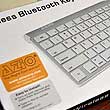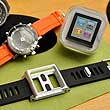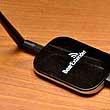There are a LOT of cool, cutting-edge high-tech companies in Massachusetts, so many that we tend to take them for granted. Some of them, like Genzyme, are public, high profile, and very well known. Genzyme was in the news recently because of the sale to Sanofi-Aventis SA for $20.1 billion plus. Others are relatively small, private, but very well known to those in their area of expertise. Olympus Innov-X is of the latter. Olympus Innov-X has been around since 2001. Olympus Innov-X Systems manufactures and sells portable x-ray based analytical instruments for non-destructive analysis. Last Summer, Olympus Innov-X was acquired by Olympus NDT, a subsidiary of global company Olympus Corporation of Japan.

A few days ago, we had an opportunity to take a look at one of Olympus Innov-X's handheld analytical analyzers called the DELTA Classic. The DELTA is a tube-based portable X-ray Fluorescence (XRF) analyzer. This handheld analyzer enables non-destructive, laboratory-grade, on-site testing and analysis of samples. The Olympus Innov-X analyzers provide analysis of elements such as Sulfur, Lead, Mercury, Arsenic, Copper, Gold, Silver, Platinum, and 75 other elements, in concentrations of parts per million up to 100% with little or no sample preparation requirements. Applications range from metal sorting, lead paint detection, and alloy verification to analysis of oil, fluids, and minerals. It is the closest example of the fabled Star Trek Tricorder to date.

The DELTA is an amazingly compact unit for what it can do. It came packaged in a water-tight foam-fitted case. There are two layers of content. The top layer holds the analyzer, calibration materials, and cables. The bottom layer houses the charger, extra batteries, and miscellaneous bits. The analyzer itself looks very similar to a radar gun and is about the same size. It fits comfortably in the hand, is nicely balanced, and has a rear-facing touchscreen LCD panel. The nose of the analyzer is flat so it can be placed flush with a surface and stand by itself unattended.

The DELTA provides alloy chemistry and grade ID in seconds. The DELTA provides highly specific material make-up information for rapid and accurate identification of pure metals and alloy grades. Once trained on its proper use, even non-technical personnel can perform tasks ranging from simple sorting to difficult grade separations.
Included with the analyzer is a reference stainless steel disc for calibration. The DELTA can display the information as peaks on a graph (spectra) or as numerical readouts (chemistry). Depending on the type of software loaded, the DELTA can perform multi-elemental analysis of metals in soil, dust wipes, paints & coatings, and other in-situ settings.


Legislation and regulations on consumer product safety exist worldwide. Lead (Pb), Cadmium (Cd), Chromium (Cr), (Mercury) Hg, Bromine (Br) and other heavy metals that might come into contact with children have been virtually eliminated from children's products through regulation. The DELTA, when loaded with the appropriate software, can be used to find lead paint in toys, detect toxic chemicals in food, or validate compliance claims, all at the push of a button.
We gave the DELTA a quick test on some of the metallic objects (key fob, tripod leg, spare change) around the office. The key fob is mostly copper and zinc. The tripod leg is made from mostly iron.

The other thing we all wanted to see is what U.S. coins are made from. We knew that it takes more than a penny's worth of metal to make the penny. Most also knew that, since 1983, the penny has been made mostly from zinc. Still, it was quite cool to see exactly how much. Since both the nickel and dime are silvery, it was not surprising that both made out of the same stuff.


The need for testing is self-evident. With today's ever increasing emphasis on recycling, reclaimed materials need to be certified free of high levels of toxic metals such as Cadmium (Cd) and Lead (Pb). Products that children come into contact with on a regular basis must be safe. From toys to feeding bottles, clothes to swing sets, and even bedding and furnishings, all must be certified to be free of toxic metals. US Customs, FDA, EPA, DOE, and International Customs Agencies routinely use the Olympus Innov-X DELTA for rapid screening analysis of regulated toxic metals.

For the present, tools such as XRF analyzers are still too expensive for the average home. This was once true of lasers and other technical tools: now Home Depot carries all manner of laser-enabled tools. We all want to know what is around us. Perhaps someday tools such as the DELTA XRF analyzer will be affordable for the masses. Maybe there will even be a version of the XRF analyzer for the iPhone :-). [Permalink] - XRF DELTA FirstLook
|






















